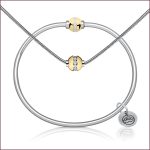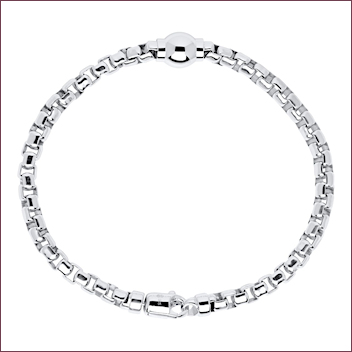Pearl Posturing
Savvy retailers can build compelling pearl boutiques that captivate new and repeat customers. Those who carve out a pearl department can cultivate this category in so many ways—promoted for weddings and seasonal fashions to the perfect gifts for birthdays, graduations, anniversaries, milestones, and more.
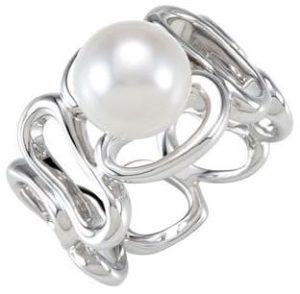 It’s not as daunting a task as you may think. Sure, it’ll take a bit of time and effort, and to do it right you’ll need to invest in more than just a few studs and some strands. But you’re starting with a proven business builder that will set your store apart from the competition.
It’s not as daunting a task as you may think. Sure, it’ll take a bit of time and effort, and to do it right you’ll need to invest in more than just a few studs and some strands. But you’re starting with a proven business builder that will set your store apart from the competition.
“You don’t have to start from scratch to build a successful pearl business, the product is already vetted – well developed in knowledge, heritage, margin,” explains Kathy Grenier, marketing director, Imperial Pearl, Providence, Rhode Island, and CPAA spokesperson. And, when partnering with a trusted pearl house, their expertise is yours for the taking. No need to reinvent the wheel when good pearl suppliers can help with merchandising, marketing and sales training.
Merchandising
Keep in mind your client base when merchandising pearls, advises Alix Gonsoulin, fine jewelry director, Stuller, Lafayette, Louisiana. “Just like with any product, there’s a variety of styling available. What will your customers be looking for: classic pearl jewelry with a twist or a trendy bypass style with lots of negative space? You need to know your consumers and then provide them with options in type, style and price point that will satisfy their tastes and desires.”
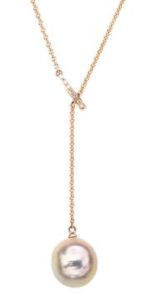
One of biggest challenges is that retailers have an elementary view of pearls, says Fran Mastoloni of Mastoloni Pearl, New York. “Jewelers with three stud earrings and a couple of strands wonder why they’re not selling pearls. You need variety – new, fashion and classic to get consumers excited about the product.”
Storytelling, says Grenier, is top of the list in effective visual merchandising to draw customers in. I always invite retailers to take note of our displays and how we present our product at the shows and the impact they make. Merchandising is an evolution, an intentional exercise of subtle nuances to communicate a message. We research how our products move. It’s never perfect, and we’re always challenging ourselves.”
While some believe in putting everything out on the show floor, Grenier says consumers want options that don’t overwhelm. Keep it simple, using more vignettes. “Incorporate trends into windows and create in-store displays that group together your offerings of the season’s top trends. Consider a mannequin or two in the latest fashion accessorized in pearls.”
Joel Schechter, CEO of Honora Pearls, New York advocates displays that allow consumers to touch the pearls. “We feel that the faster you get pearls into a customers hands the better. Pearl is a tactile gem that warms to body temperature and has a silky feel. Displaying pearl ropes creates a great visual and it gets people touching the product.” He also recommends using videos available through resources like the CPAA that show where pearls come from and the process that brings them to market. It helps to tell the story.
Marketing
When it comes to marketing pearls, pearl houses like Imperial, Honora and Mastoloni have all the bells and whistles any jeweler would need from branded displays and packaging to a library of high-resolution images and custom advertising material for print and online campaigns.
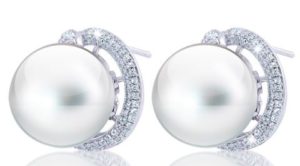 Schechter believes that branding is an important sales tool for pearls. “We put a lot of money and support behind our name to make it easier to sell pearls and cultivate collectors. We do all the research to market our products so our retailers don’t have to.”
Schechter believes that branding is an important sales tool for pearls. “We put a lot of money and support behind our name to make it easier to sell pearls and cultivate collectors. We do all the research to market our products so our retailers don’t have to.”
Grenier advises jewelers to stay on top of trends to get into the conversation. “This doesn’t require spending hours following every runway show and fashion blogger. Press like JCK provides overviews of fashion trends; as does most mainstream news media. Read those summary reports and bring that knowledge into online and in-store conversations with customers.” She suggests jewelers create posts and use smart devices like an iPad in store to spotlight fashion trends illustrated with jewels in stock to show customers the possibilities.
Gonsoulin reminds jewelers to send marketing materials when possible and to keep price points mindful in their efforts. “Use your classic pearl studs for graduation season. Promote higher priced styles like halos during Christmas.”
Training
Leading pearl suppliers are also ready, willing and able to conduct in house sales training and the CPAA has tools like flash cards and videos to get associates up to speed. “Pearls are not like diamonds,” says Schechter. “They’re actually easier to talk about and romance. It’s in the luster. It’s a look, a feel. It’s organic. It’s not a hard gem to learn about.”
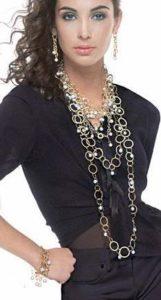
The key talking points jewelers should keep in mind when selling pearls, says Ashley Corely, Stuller’s gemstone product manager: “Let the customer know what type of pearls they’re getting natural, cultured, or imitation and the meaning behind each of those types. Also explain the different price points for these items by the quality of the pearls such as luster and the make of the pearl, as well as the pearl’s origin. The more information the customer has on what makes a pearl, a pearl, the more comfortable they will be with purchasing them.”
Mastoloni suggests sales associates always wear pearls on the show floor. “It’s a great conversation starter when people see them on. Wearability is the best talking point for pearls; they effortlessly go from day to night, activity to activity. Get some pearls on your customers and they’ll see how they can transform their look. Once customers hold them, roll them, feel them, they’re captivated!”

